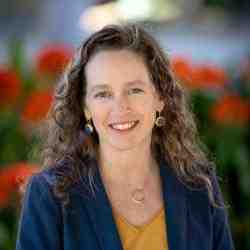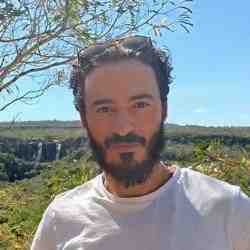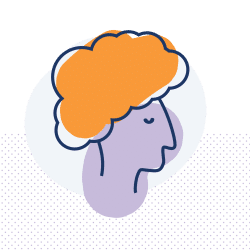Introduction
Thomas De Groote is transforming how communities tackle plastic pollution in rivers worldwide. Through his comprehensive, science-based model, he enables upstream communities to orchestrate coordinated efforts. Across education, waste collection, data monitoring, and policy advocacy, Thomas is preventing plastic waste from reaching the sea and ensuring clean rivers.
The New Idea
Plastic in rivers continues to be a persistent problem. Despite numerous efforts by environmental groups and others to remove plastics through volunteer cleanups and other strategies, Thomas realized that to make real progress toward the end-goal of a clean waterways, communities all along the rivers need to build and be invested in a system that repeatedly acts to create clean rivers, not just sporadically attempts to remove plastics.
He observed that most initiatives remain fragmented, locally bound, and lack long-term accountability mechanisms. This insight led him to design a model that builds broad-based ownership and overcomes top-down logic, fostering cohesion and shared accountability across all levels of the system. Thomas is supporting riverside communities to develop integrated, durable strategies to prevent pollution, clean up pollution when it happens, and have accurate data to measure whether rivers are making progress toward the standard of pollution-free rivers. Recognizing that plastic and other river pollution will likely never be reduced to zero, Thomas wants communities all along a river to be “built” with the elements and commitment to continually regenerate progress toward the end goal of a clean river.
Thomas’s River Cleanup approach helps communities create this system by empowering people with skills and tools to clean rivers, preventing pollution through new waste management strategies, and inspiring faster progress using data and clean-river standards. To build a belief that progress is possible, Thomas enlists communities to host participatory, celebratory river cleanups that are connected to other communities along the river and to a global network. He works closely with government officials, environmental advocates, and other leaders already invested in a clean river. He also supports local governments in building systems to reduce, collect, and manage plastics and waste before they enter rivers, and works with companies to reduce plastic packaging and adopt sustainable practices. A key innovation of Thomas’s model is the introduction of a standardized framework that allows communities to track their river’s health over time, benchmark progress, and prioritize action. This shared metric creates a sense of collective ownership and accountability across sectors and locations.
To further accelerate progress, Thomas leverages new tools and technology to monitor and measure pollution. These include mobilizing citizens to collect data with their phones, using drones to map improvements, identifying high-impact pollution zones, and tracking the corporate brands most responsible for waste. His approach shifts the focus from remediation to systemic prevention and empowers local actors to be protagonists of change rather than passive beneficiaries of aid.
Since 2019, Thomas has been implementing the River Cleanup approach in communities along the Scheldt in Belgium, the Citarum in Indonesia, and the Wouri in Cameroon – two of which are among the world’s most polluted rivers. Through River Cleanup’s global network connecting river communities, Thomas has mobilized over 300,000 volunteers across 101 countries, engaged over 20,000 students in the River Cleanup approach, spurred over 6,500 cleanup actions to build awareness, collected over 3.7 million kg of plastic waste from rivers, and established partnerships with local governments, especially in Indonesia.
He is now working to position the River Cleanup model as a global standard that can be adapted and owned locally, while maintaining connections to an international learning network of communities facing similar challenges.
The Problem
Every day, approximately 30,000 tons of plastic enter the world's oceans, equivalent to the contents of around 2,000 garbage trucks being dumped into our waters. The tons of plastic that visibly accumulate along urban rivers represent the most evident symptom of an environmental crisis threatening river ecosystems and communities worldwide.
Small urban rivers are among the world's most significant contributors to ocean pollution. They function as direct arteries that transport plastic waste from upstream communities to the oceans, where removal becomes exponentially more difficult. If not removed, plastics persist in the environment for hundreds of years, fragmenting into microplastics that contaminate water supplies, harm wildlife, and pose a threat to human health through the food chain.
Despite growing awareness of the problem, plastic pollution persists due to a fragmented approach to solutions and the impossibility of entirely eliminating plastic production, given its essential role in critical sectors like healthcare and food safety. While solutions along rivers remain technically and economically feasible, most initiatives focus on isolated approaches – such as cleanup events, awareness campaigns, educational programs, or waste management improvements – without integrating these different strategies into a coordinated system deeply rooted in communities living along the river.
This fragmentation undermines the effectiveness of well-intentioned efforts. During a river cleanup event, volunteers remove tons of plastic waste from the banks; nevertheless, without parallel awareness campaigns, the local population continues throwing waste into the water out of habit or a lack of alternatives. At the same time, even the most effective awareness campaigns and educational programs fail if adequate collection points or a functioning waste management system are not in place. Therefore, the day after the cleanup, new waste is already accumulating along the watercourse. The result is a vicious cycle in which each individual intervention, however well-meaning, remains ineffective without the support of complementary strategies.
The fragmented approach to managing plastic pollution in rivers is further complicated by the lack of standardized data. Organizations and scientific institutions use different methodologies to measure contamination levels, employing varying indicators, units of measurement, and sampling protocols. This methodological inconsistency undermines data comparability and hinders the evaluation of intervention effectiveness, making it difficult to establish priorities based on concrete evidence. As a result, advocacy initiatives for policy reforms are also weakened, lacking the empirical support necessary to guide informed decision-making.
The Strategy
Thomas's River Cleanup approach recognizes that keeping a river clean involves multiple upstream local community actors and requires a science-based, data-driven model. The strategy is structured through three interconnected pillars: “Empowering People”, “Preventing Pollution”, and “Accelerating Change”.
Starting from target river selection, River Cleanup identifies key countries based on volunteers who can provide local support. In each new location, the process begins with monthly cleanup events that raise community awareness while the team conducts field research to understand local conditions and establishes baseline measurements for future monitoring. Currently, the team at River Cleanup is developing a global map of the most polluted waterways by combining desk research and quantitative data to establish standardized criteria for prioritizing rivers requiring intervention.
By means of the first pillar, "Empowering People", Thomas promotes community mobilization through interventions that combine awareness-raising, education, and local leadership development to create lasting change. River Cleanup organizes and supports regular cleanups that transform waste collection into awareness moments where communities and volunteers recognize the problem and feel part of the solution. River Cleanup provides local organizations with materials and tools to enhance their efforts, creating, through monthly River Cleanup Days, a sense of collective responsibility. Thomas has mobilized 305,651 volunteers (“River Warriors”) across 101 countries through 6,688 cleanup actions, collecting 3,719,830 kg of plastic waste from 200 rivers. In 2024, River Warriors achieved significant results across three key regions: in Cameroon, 3,760 volunteers collected 20,297 kg of waste (including 15,468 kg of plastic); in Belgium, 4,597 volunteers gathered 29,409 kg of waste (14,157 kg plastic); and in Indonesia, 3,475 volunteers collected 108,082 kg of waste (104,675 kg plastic).
Since 2021, the River Cleanup School Program brings interactive sessions to schools, which evolved in 2024 into the Plastic Clever Schools program in partnership with Common Seas and Kids Against Plastic. Participating students aged 12 to 14 years old don't just discover the problem but become "change ambassadors" implementing solutions against plastic pollution at school and home, and inspiring mindset shifts within their families and communities. The program follows three steps: first, learn about plastic pollution, organize a small pick-up, and hold a school assembly; second, audit plastic waste in the school, identify problem plastics and create an action plan to tackle them; and finally, turn plans into action through a school campaign and create an eco-team with a representative from every class who keeps the ecological commitment alive throughout the school year. Thomas has engaged 20,000 students across 210 schools in Indonesia, Cameroon and Belgium. In 2024, over 12,000 students from 20 schools in Cameroon joined the program. Among all participating schools, two were selected as winners of an award that empowers student-led action, and they received funding to implement sustainable projects: green gardens and better waste management at school. In 2025, the first edition of this new program has been launched in 20 schools in Belgium and in Indonesia.
Recognizing that sustainable intervention requires strong local leadership, River Cleanup has established a country leader in each region where it operates. These leaders participate in monthly learning exchanges across different action zones, sharing insights, challenges, and successes. Looking ahead, this accumulated knowledge will be integrated into the Clean River Academy, a digital training platform where current Global South staff will train and support new country leaders in implementing the River Cleanup Model.
The second pillar, "Preventing pollution", addresses waste at different stages through three interconnected interventions. River Cleanup installs recycling bins in schools, public spaces, and residential areas to create accessible collection systems that promote proper waste separation. Beyond volunteer "River Warriors," the model includes full-time "Daily Cleanup Crew" members who conduct daily operations, manually removing plastic waste captured by containment barriers in rivers and at illegal dumps, preventing it from flowing toward larger rivers and oceans. All collected materials are processed through River Cleanup Material Recovery Facilities, specialized processing centers where waste is sorted, washed, weighed, baled and directed to partner recyclers. Thomas consolidates these initiatives through formal agreements with government structures. In Indonesia, he has engaged Kelurahan leaders (heads of Indonesia's smallest urban administrative units) along the Citarum River and the Deputy Mayor of Bandung in signing memoranda of understanding, securing their commitment to support plastic-free river initiatives. One concrete outcome was a partnership between Bandung Manufacturing Polytechnic and the Bandung City Government, enabling the installation of three plastic barriers to prevent waste from entering waterways. In Belgium, in 2024, he was requested to provide a memorandum to the Flemish Government titled "Plastic Pollution: Challenges and Opportunities" to provide input on plastic and environmental policy. These efforts ensure legitimacy and long-term impact.
The third pillar, "Accelerating Change," focuses on tracking progress and pollution levels to identify what works best and share these insights with other communities and local organizations who want to protect their rivers. These indicators quantify problem awareness, plastic use reduction, increased waste separation, and decreased littering, among others. Beyond data collected from operational activities, Thomas experiments with technology, such as drones and artificial intelligence, to map critical areas and identify future intervention zones. An example is the River Watchers project, developed with a Belgian research institute and launched in 2025. This app transforms citizens' smartphones into scientific monitoring tools, allowing them to document and map pollution by photographing waste, actively engaging people, and creating a monitoring network. At the project's core, 100 dedicated volunteers regularly walk designated routes to collect consistent longitudinal data on how much waste accumulates, which types dominate, and how this evolves. Beyond this committed base, the goal is to mobilize at least 1,000 citizens across Belgium to map litter and create an overview of its distribution.
All data collected from the three pillars' activities will converge in the River Data Platform, currently under development, which will centralize and analyze waste-related data according to standardized protocols. The platform will grant contributing local organizations free access to region-specific data, supporting their advocacy to influence local governments toward adopting regulations that reduce plastic pollution and improve waste management. In Bandung, the Water Resources and Public Works Department uses River Cleanup's standardized data to guide more informed decisions for the territory. Additionally, Thomas is collecting data through brand audits to identify companies responsible for plastic pollution. River Cleanup is mapping the most frequent waste found in nature through projects like River Watchers and uses artificial intelligence technology to trace product packaging back to its original producers. Once sufficient evidence is gathered, these findings will be shared with companies to promote corporate accountability and encourage them to reduce single-use plastic production.
Thomas' River Cleanup supports operations through philanthropy, paid corporate cleanup events, and sponsorships where companies donate one euro for every kilogram of plastic collected in designated action zones, accompanied by educational workshops that spread awareness about plastic pollution.
Thomas's three-pillar strategy operates as a self-reinforcing system where community skills and awareness prevent pollution from reaching the sea, generating data that fuels deeper engagement, strengthens advocacy, and improves intervention methods. Building on this foundation, Thomas plans to scale to 100 rivers by 2030, transforming local actors into change agents who sustain clean waterways and ensure long-term environmental stewardship.
The Person
Son of a boat captain on the canal of Ghent, a historic commercial waterway, and a mother with strong moral principles, Thomas participated at the age of eight in a cleanup initiative organized by his school at Lake Ghent, and with a friend they began to dream of creating their own waste collection company one day.
Years later, in 2017, Thomas was taking a career break from his role as change management officer at a nursing home operator. His sister challenged him to dedicate ten minutes a day for ten consecutive days to picking up litter along his street. Thomas involved his children and suddenly became aware of the amount of plastic pollution that had remained invisible to him until then.
What began as a personal challenge transformed into a family moment, then expanded into concentric circles: Thomas first invited neighbors to join in, then friends, and finally rallied the entire community. This wave of participation and enthusiasm led to the Rhine Cleanup initiative in 2017 in Germany, where Thomas was living at the time. The event he coordinated mobilized 10,000 volunteers across 59 cities, with numerous organizations participating, removing over 100 tons of waste. But the initiative's success also highlighted its geographical limitations. The problem was global. Focusing only on the Rhine wasn't enough. Thomas therefore left Rhine Cleanup to found River Cleanup in 2019, following this broader insight.
A few years later, a River Cleanup board member confronted Thomas with a pivotal question: “What do you really want to do with this organization: collect as much plastic as possible or create clean rivers? Thomas realized once again that the problem was bigger than his solution. Cleanup events were fragmented efforts that merely addressed the symptoms of deeper problems. Creating rivers that would stay clean required getting communities to work together and change their behavior to stop pollution at its source, rather than just removing the plastic. Drawing from his professional background, he began developing a model that would systematically address plastic pollution along its cycle, while engaging communities in sustainable practices. This approach evolved into the River Cleanup Model.




